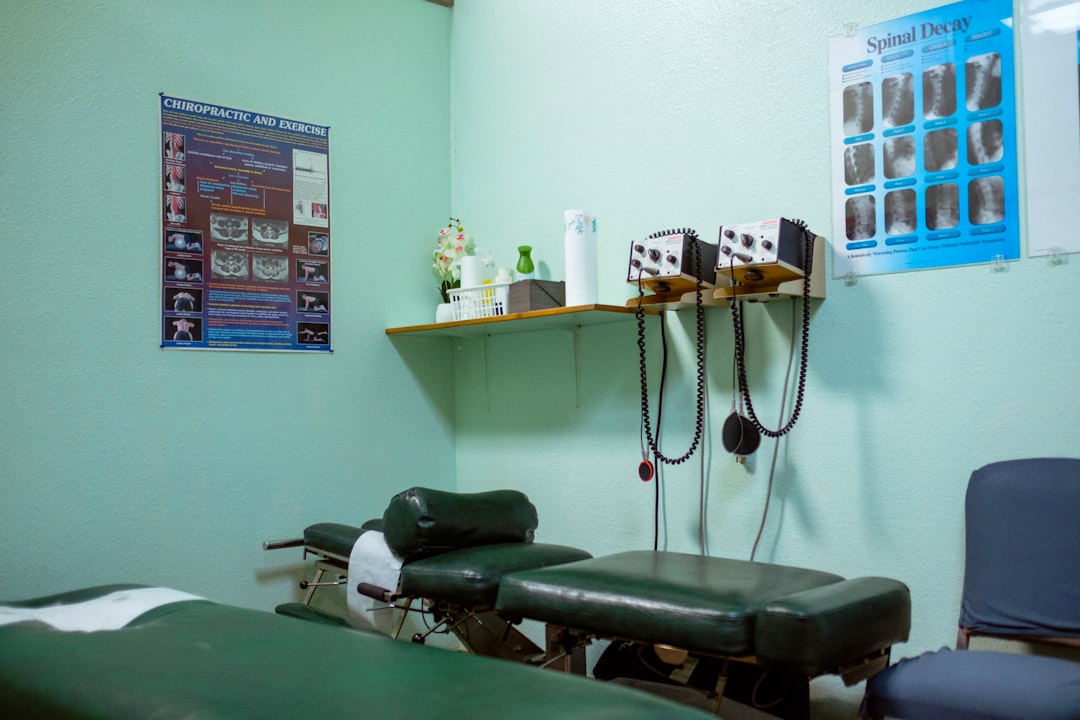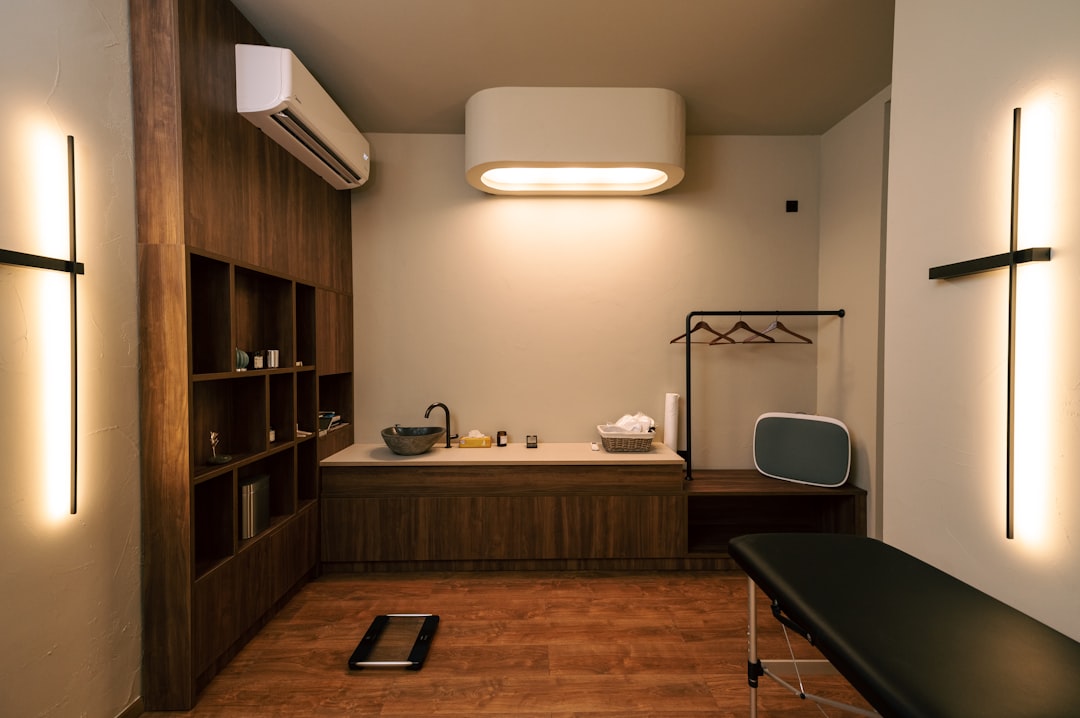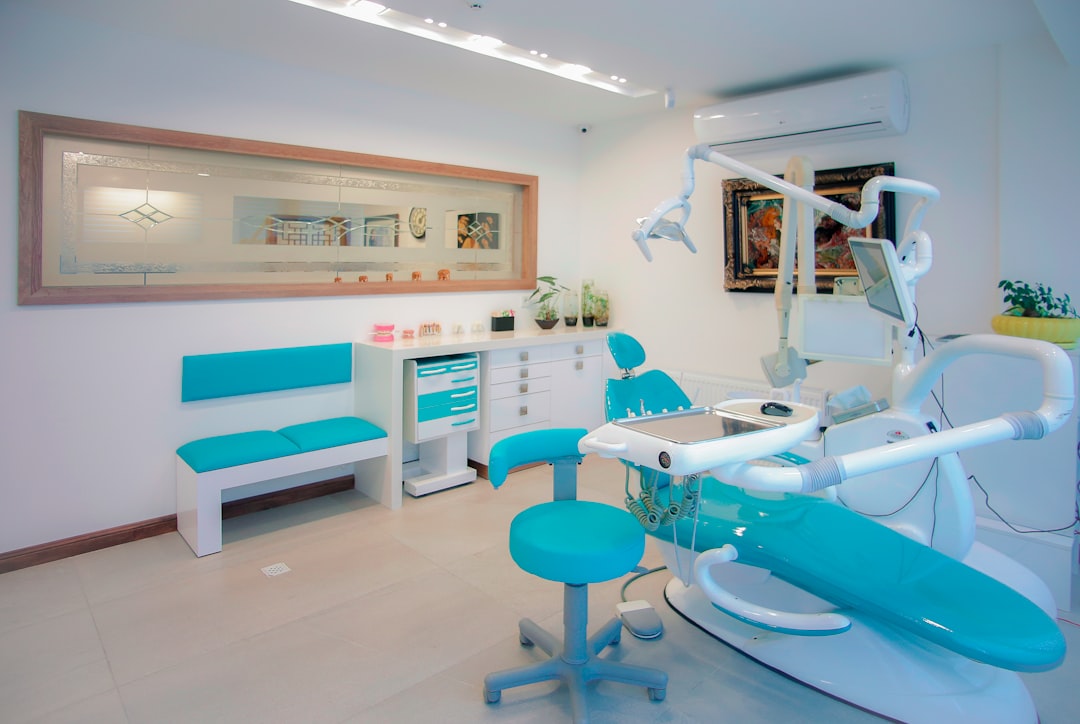

Engage prospects with a scan and streamline customer engagement with FREE QR code marketing tools by Sona – no strings attached!
Create a Free QR CodeFree consultation

No commitment

Engage prospects with a scan and streamline customer engagement with FREE QR code marketing tools by Sona – no strings attached!
Create a Free QR CodeFree consultation

No commitment
For vein treatment clinics, missing timely and comprehensive patient feedback is not just a lost opportunity; it creates a wall between patient insights and care improvements. Relying on paper surveys, phone follow-ups, or printed brochures often means high-value patient experiences go uncaptured or siloed outside clinic systems, making it all too easy for key insights to slip through the cracks.
This gap matters because anonymous or untracked patient journeys frequently result in missed opportunities to address their needs, refine care pathways, or resolve concerns after varicose vein treatment. Clinics risk delivering generic follow-up, with little visibility into which recovery experiences or cost challenges matter most to patients. In today’s competitive landscape, that level of disconnect can impact both reputation and revenue.
Digital engagement, particularly QR codes, now gives clinics the tools to unify in-person and online experiences. Patients can immediately share feedback or concerns by scanning a code, while clinics gain real-time access to data they otherwise might miss. Integrated properly into check-ins, treatment areas, or post-procedure materials, QR codes close the feedback loop: reducing administrative overhead and surfacing actionable insights before competitors do. This guide explores how vein treatment clinics can modernize feedback collection and truly act on what matters most to their patient base.

QR codes address a fundamental challenge for vein treatment clinics: ensuring that valuable patient perspectives, whether regarding varicose vein treatments, care quality, or billing experiences, are not lost because they remain anonymous or are never formally tracked. Traditional feedback methods often fail to surface these high-value signals quickly or completely, creating gaps in patient experience data and slowing quality improvement initiatives.
Today, clinics can use QR codes to rapidly invite feedback at any step in the patient journey. This approach eliminates barriers for patients who might not fill out lengthy forms or answer follow-up calls. Clinics place QR codes at check-in desks, in treatment rooms, or on discharge instructions, making it as simple as a scan to contribute feedback. When paired with dynamic, trackable destinations like dynamic QR codes, every scan becomes an actionable signal that feeds your CRM, task lists, and reporting dashboards.
Modern feedback platforms help clinics address segmentation and timeliness gaps by syncing QR scan data to CRM records, triage queues, or marketing automations. The result is a continuous loop where patient voice informs clinical practice, staff coaching, and outreach, all without expanding administrative workload.

A critical pain point for many clinics is the inability to connect in-person patient encounters with digital touchpoints, leaving valuable lead and feedback data unidentified. When patients do not submit forms or engage on-site, their opinions often stay anonymous, preventing clinics from taking timely action or nurturing repeat visits. Delayed or missing feedback also makes it difficult to validate protocol changes, train staff on empathy moments, or resolve billing confusion before dissatisfaction spreads.
QR codes bridge this divide by making participation immediate and effortless. Patients can scan a small code and land on a tailored destination: a one-minute survey, a testimonial prompt, aftercare instructions, or a payment support form. This simplicity removes the friction of app downloads, typed URLs, or long hold times, turning invisible touchpoints into measurable actions. Clinics can then prioritize outreach based on urgency signals, such as a low satisfaction score or a question about compression stocking reimbursement.
For example, adding a QR code to billing statements can uncover high-friction areas related to coverage and prior authorizations. Patients can signal confusion or request a callback, which helps your team resolve issues before they lead to dissatisfaction or negative online reviews. Across the journey, QR codes ensure patients are heard while providing the clinic with structured, timely data.
Generic forms and catch-all inboxes rarely capture the nuance of vein care. QR codes let you match format to intent so feedback feels relevant and quick. By selecting the right type for each touchpoint, you improve completion rates and data quality without increasing patient effort.
Dynamic QR codes are especially useful in clinical settings, since forms evolve, services expand, and patient education needs change. With dynamic codes from Sona QR, you can update destinations on the fly, pause campaigns that are underperforming, and A/B test survey designs without reprinting signage.

Many clinics miss follow-up or upsell opportunities because they do not connect post-treatment signals to targeted communication. When feedback is siloed or nonexistent at key touchpoints, patients’ evolving needs go untracked, increasing the risk of churn or missed referrals. QR codes let you place the right ask in the right moment, capturing attention while intent is high.
By placing QR codes at these high-impact moments, you close feedback blind spots and identify patients who are ready for education, financial counseling, or additional services such as cosmetic sclerotherapy. The result is better patient experience and a pipeline that grows through referrals and reactivations.

Delayed or incomplete capture of patient sentiment and intent is a real risk when clinics rely on manual calls or generic emails. QR codes turn passive materials into active channels that meet patients where they are and guide them to the next best step.
Mature programs will expand these use cases with scan-triggered education modules, consult requests, and portal enrollments. Clinics can track completion rates and ratings by procedure type to identify where recovery expectations need resetting or where additional touchpoints will reduce anxiety.
Each QR code scan is a signal containing context such as stage of care, location, and topic of interest. When you deploy multiple codes across the journey, you automatically segment your audience and can tailor outreach based on behavior rather than assumptions. This unlocks more relevant follow-up that feels supportive instead of generic.
In vein care, useful audience distinctions include new consult seekers versus existing patients, cosmetic interest versus medical necessity, and cost-sensitive patients versus those focused on recovery time. When your campaigns respect these differences, response rates rise and patients feel understood.
Most clinics use a combination of print, events, email, and in-clinic signage, yet struggle to measure which touchpoints drive action. QR codes connect your offline presence to your digital engine so every surface can capture demand and every interaction can be attributed and improved.
QR codes serve as the offline onramp to your digital marketing workflow. With a centralized platform like Sona QR, you can manage all codes in one place, monitor performance at a glance, and sync scan data to your CRM so your nurture sequences reflect what patients actually scanned and asked for. Start creating QR codes for free.
Clarify the business outcome before you print or deploy anything. Decide whether you are trying to collect post-visit feedback, gather testimonials, drive consult bookings, or surface billing questions. The sharper the goal, the easier it is to write a clear call to action and design a destination that delivers.
For vein treatment clinics, a high-value starting point is a post-procedure CSAT survey linked from discharge materials. Add a secondary path to request a nurse callback for urgent concerns. Another strong use case is an invoice-attached code for insurance questions that routes to a short form and an FAQ page, which lowers inbound call volume and improves patient understanding.
Match your code type to the level of control and insight you need. Dynamic QR codes let you update destinations and capture analytics such as time, device, and location. Static codes are better for unchanging, low-stakes content like a general brochure PDF.
In clinical environments where messaging evolves, dynamic codes are the default choice. With Sona QR, you can adjust destinations without reprinting, append UTM parameters for attribution, and roll up performance by campaign. If you plan to segment by procedure or location, dynamic is essential.
Design for clarity and trust. Include a benefit-oriented CTA like Scan to share your visit today or Scan for day 1 recovery tips. Use clinic branding, accessible color contrast, and sufficient size. Place the code at eye level where patients naturally pause.
Test scannability on different devices, distances, and lighting conditions. Use real clinical scenarios: a patient in a gown near the ultrasound machine, a caregiver holding a bag of belongings at checkout, or a patient at home under warm lighting. Validate that the destination is mobile-first and loads quickly on cellular networks.
Roll out codes systematically across check-in, treatment, discharge, and billing. Start with a pilot at one location or for one procedure type, then expand based on results. Train staff to point out the code and explain the why in a sentence, such as Your feedback helps us improve recovery support and appointment flow.
Prioritize placements that reduce risk and amplify learning. Aftercare packets and waiting room signage typically generate strong scanning behavior. Event signage at community screenings can feed consult pipelines and education sequences. Update creative quarterly to keep prompts fresh and aligned with seasonal messaging.
Use dashboards to track scans by location, time, device, and destination. Monitor completion rate for surveys and follow-through on booking forms. If a placement underperforms, test a different CTA, an alternate position, or a shorter survey.
Create a monthly feedback and performance review. Share insights with providers and front-desk teams. Celebrate wins, such as improved satisfaction after a new pre-op script, and prioritize fixes where patients commonly get stuck. With Sona QR, you can compare campaigns side by side, push changes instantly, and export data to your BI tools for deeper analysis.
A frequent pain point is the lack of visibility into which material or staff interaction prompts meaningful engagement. Without analytics, clinics keep investing in tactics that may not work and miss chances to act on high-intent signals. QR analytics change this by tying every scan to context and outcome so you can attribute results and budget confidently.
Robust QR analytics help address this challenge by revealing where and when patients participate, which destinations convert, and how scan behavior correlates with consults, reviews, and referrals. You can segment by clinic location, provider, or procedure type to identify which teams need support or which services require better education. Over time, these insights help you standardize what works and sunset what does not.
The result is a closed loop from scan to revenue. You know which physical assets and messages drive patient action, which empowers leaders to allocate budget to the highest performing channels and scale the feedback engine across locations.
Some clinics underestimate how much design, placement, and messaging influence scan behavior. Others collect feedback but fail to act on it, which discourages participation over time. A few operational adjustments can boost scan rates and ensure insights lead to change.
Creative deployments can lift results. For example, add a QR code to compression stocking instructions that links to a short video on proper wear and fit with a feedback button at the end. Or include a QR code on invoices labeled Scan for coverage help that routes to a billing support form and a list of accepted insurers.

In practice, missed or poorly tracked feedback can lead to systematic misunderstandings of patient priorities. Clinics that fix this with QR-enabled workflows often see improvements in satisfaction scores, review volume, and operational efficiency. Here are examples to inspire your approach.
Each example demonstrates how connecting offline engagement to digital analytics turns patient voice into operational and marketing gains. Your clinic can replicate these workflows with dynamic codes, clear CTAs, and CRM integration to ensure follow-through.
Clinics sometimes deploy QR codes without considering patient comfort, accessibility, or privacy, which suppresses scan rates. Others place codes where scanning is awkward or forget to close the loop with visible improvements. Avoiding these pitfalls elevates both participation and trust.
QR codes are not just a modern touchpoint; they are a critical link connecting patient voice to clinic improvement. By strategically embedding QR codes at every step of the care journey, vein treatment clinics can finally capture the feedback and engagement signals that once went unseen, surfacing opportunities to act swiftly and nurture high-value relationships.
This approach helps clinics not only measure satisfaction or recovery, but also continually refine operations in response to real patient needs, addressing issues like anonymous dissatisfaction, delayed outreach, or cost confusion before they affect retention or reputation. Centralizing QR-driven insights through analytics and CRM integration empowers clinics to personalize engagement at scale, making every interaction count.
Ultimately, QR code-enabled feedback turns patient experiences into actionable intelligence, helping vein treatment clinics deliver higher standards of care and cultivate lasting trust and growth. With platforms such as Sona QR to power creation, tracking, and integrations, and Sona.com to connect real-world engagement to attribution and revenue, your team can launch quickly, learn continuously, and build a sustainable feedback engine that supports both patient outcomes and business performance.
QR codes have revolutionized vein treatment clinics by transforming patient feedback collection into an efficient, insightful process. Beyond just gathering opinions, they empower clinics to enhance patient experiences, streamline follow-up care, and identify key service improvements—all through instant, mobile-friendly interactions. Imagine knowing exactly which treatment touches resonate most with patients and being able to act on that insight immediately to improve care quality.
With Sona QR, you can effortlessly create dynamic, trackable QR codes tailored for vein treatment clinics. Update your feedback campaigns in real time without reprinting materials, monitor patient engagement down to each scan, and directly link insights to better clinical outcomes and patient retention. No more guesswork—just smarter, data-driven decisions that elevate your clinic’s reputation and growth.
Start for free with Sona QR today and turn every patient scan into actionable feedback and lasting loyalty.
Vein treatments include sclerotherapy, endovenous laser ablation (EVLT), and ambulatory phlebectomy, which clinics use to segment patient feedback and tailor outreach.
Choosing the right vein clinic can be informed by clinics that collect and act on timely, detailed patient feedback through digital tools like QR codes, ensuring care is personalized and concerns addressed.
Vein treatment costs may involve deductibles, coinsurance, and prior authorizations; clinics use QR codes on invoices and statements to identify patient confusion and improve billing transparency and support.
Many vein clinics deploy QR code systems at multiple locations, including satellite clinics, to capture patient feedback and engagement, helping identify and improve care based on location-specific data.
Clinics identify insurance coverage issues through feedback gathered via QR codes on billing statements, enabling staff to address coverage questions and update FAQs about accepted insurance plans.
Clinics use QR codes placed at check-in, treatment rooms, discharge materials, and billing statements to collect real-time, trackable patient feedback that integrates with CRM systems for timely follow-up.
QR codes simplify feedback by allowing patients to scan and immediately share their experiences or concerns, turning passive materials into active engagement channels that improve service and patient satisfaction.
Common QR code formats include mobile surveys tailored by treatment type, contact cards for care coordinators, pre-filled SMS or email messages for aftercare questions, and app download links for patient portals.
By placing QR codes at key points like check-in, treatment rooms, and aftercare, clinics capture immediate feedback, identify patient needs, and automate follow-ups to reduce churn and increase referrals.
Clinics use QR analytics platforms to capture scan data by time, location, device, and campaign source, linking feedback to consult bookings and outcomes for targeted improvements and budget allocation.
Best practices include using dynamic codes for flexibility, placing codes where scanning is natural and visible, keeping surveys brief, training staff on privacy and value, and regularly updating prompts to maintain engagement.
Yes, clinics add QR codes to billing documents that direct patients to short surveys or support forms, helping identify confusion areas and enabling staff to provide timely assistance and reduce call volume.
QR codes on brochures, social media, direct mail, and events link patients to tailored educational content, appointment booking, insurance verification, and patient testimonials, enhancing engagement and lead nurturing.
Clinics should track scan and survey completion rates, analyze insights by location and provider, share results with staff, implement improvements, and automate follow-up communications to close the feedback loop.
Clinics train staff to explain data use transparently, provide privacy policy links on surveys, design clear benefit-oriented prompts, and demonstrate how feedback leads to visible clinic improvements.
Use Sona QR's trackable codes to improve customer acquisition and engagement today.
Create Your FREE Trackable QR Code in SecondsJoin results-focused teams combining Sona Platform automation with advanced Google Ads strategies to scale lead generation

Connect your existing CRM

Free Account Enrichment

No setup fees
No commitment required

Free consultation

Get a custom Google Ads roadmap for your business






Launch campaigns that generate qualified leads in 30 days or less.
